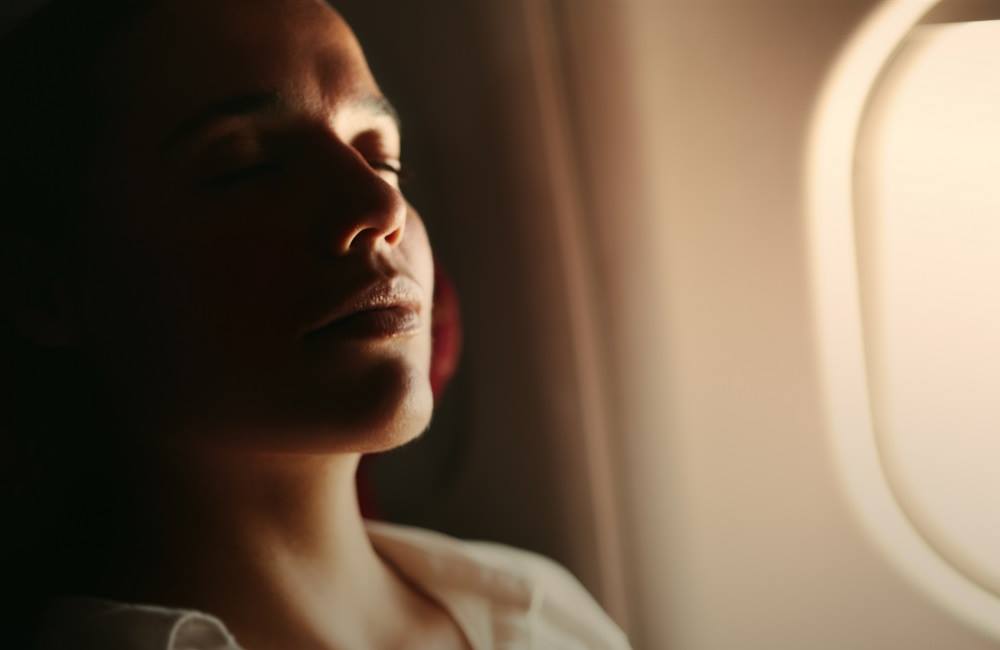
by Flying Angels Editorial Team | Mar 29, 2018 | News & Resources
Travel hacks make the task of flying a bit more bearable. While you can’t control everything about the trip, you can take small steps to increase your comfort level.
DIY Travel Hacks
Flying on a commercial airline is not always a fun experience. For those who hate to fly it may even cause a lot of anxiety and stress. Ill or disabled travelers using a non-emergency medical transport service have the benefit of a trained professional who can suggest these proven travel hacks before their trip.
TSA Travel Tips for Disabled Travelers
A Flight Pillow
A quality flight pillow that can bend and fit comfortably around your neck whether you are sitting back in your seat or turned to the side. It’s certainly better than the classic “lay your head on the tray” maneuver.
A Hydrating Face Mask
Flying can really dry you out, especially if you are prone to drying out, anyway. A face mask can help keep the moisture in your face and not let it drift away in the recycled air at 35,000 feet.
Portable Charger
No, you can’t charge your phone or tablet on the plane. When power runs out, it’s goodbye electronic device until you get to the airport. Pack a portable charger that keeps your equipment up and running so you can keep enjoying whatever movie you’ve decided to watch in-flight.
International Travel Checklist
Headphones
Whether you are piping in actual audio or wearing noise-dampening headphones, this is a smart choice to drown out the sound of the salesperson in the next seat over describing in detail his last trip to Omaha. Or that baby crying behind you.
Have Standout Luggage
This isn’t so much in-flight, but post-flight. Still, it’s smart to either buy that pink piece of luggage or slap your black suitcase with a giant smiley face sticker. Otherwise, it’s easy to have a tough time spotting your luggage among all the black and grey luggage on the baggage carousel.
Play Music
If you get nervous during a flight, then pack your iPhone or other portable device with music that you love and that calms you down. Simply listening to music you enjoy can make a flight go by much faster.
Fun Things to Do on a Plane
Exercise
If you are able, exercising before a flight can make it easier to fall asleep once you get in the air. If not, stretching exercises can both make you feel calmer and more comfortable during the flight.
A Blanket
It’s cold up there in the upper atmosphere. Airlines rarely have blankets, and when they do, they are whatever is the opposite of “cozy.” Ensure your own coziness with a compact travel blanket that will keep you warm.
Sanitizing Wipes
Planes, with everyone packed in together, can get pretty germ-y. This is especially an issue if you are receiving medical transport. It’s a wise move to get some sanitizing wipes to clean off your tray table, your hands and any other surface you touch.
Hand Cream
Same idea as the face mask. Recirculated air will dry you out, but a good dose of hand cream will keep your skin fresh and smooth (and smelling good) throughout your flight.
What Is The Best Seat on an Airplane?
Sit Near The Wings
Many of those on a NEMT flight will sit near the front if moving down the aisle is difficult. But if it’s not, consider sitting somewhere near the wings. There’s a bit less turbulence in the middle of a plane, because they are designed to rock back and forth when there is turbulence.
Those are some of the best techniques for making long flights more bearable. Just remember that you don’t have to suffer if you can possibly find ways to make the flight less unbearable. And keep in the mind that eventually, it will be over!
7 Unique Holiday Travel Ideas

by Flying Angels Editorial Team | Mar 19, 2018 | News & Resources
One of the key components of non-emergency medical transport (NEMT) is the presence of a flight nurse who travels with clients as they navigate through the airport and eventually take their flight.
For those interested in NEMT, it’s illuminating to know everything they do for patients.
Flight nurses have a challenging job. Transporting a patient via flight, 35,000 feet in the air with no one to call for help, is a huge responsibility. But flight nurses do an excellent job with this critical task. They combine the expertise of a medical professional with diplomatic skills and experience in travel to make the experience safe and even enjoyable.
Situations That Require NEMT
Why You Want A Flight Nurse
Flight nurses are trained to handle medical emergencies while traveling. They also handle dispensing any medication that is needed and put in the effort to make sure a client travels as comfortably as possible.
As in the case with Flying Angels, the best NEMT companies employ flight nurses who are registered nurses who have graduated from accredited nursing programs and obtained their RN license. They also have experience in critical care and emergency medical situations and are trained in flight physiology.
During a time when you might feel vulnerable as you make a long trip on a commercial airline, flight nurses provide the comfort level and expert care that gives you the confidence you need for your trip.
Are You Too Sick to Travel?
What Flight Nurses Do
Flight nurses have a variety of important duties. They include the following.
Packing a medical kit. Flight nurses carry the medical equipment needed to handle an emergency, as well as any medication a client needs.
Meeting all time schedules. Flight nurses, working with flight coordinators (who also are registered nurses), plan the trip and then manage it to meet all the scheduled airport arrivals and flight times.
Arranging ground transportation. This includes getting clients to the airport of departure and securing transportation once they arrive.
Working with international medical services. Flight nurses also coordinate any services needed overseas on international flights. This can include overcoming language barriers and understanding how medical services work in other countries.
Understanding airline rules. Flight nurses must know how different airlines handle different situations – both in the United States and overseas – and plan and act accordingly.
Understand flight physiology. Flight nurses have training in the specialty of flight physiology, as well as psychological stresses that sometimes affect clients during air travel.
What is Aviation Physiology?
Safety First
Commercial airlines were not designed for medical transport, but instead are a public transportation service. Part of understanding the different rules of airlines surrounding NEMT is knowing how to get the proper equipment when needed, such as stretchers and wheelchairs.
All of this is part of a flight nurse’s focus on safety. That’s the first job of a flight nurse: providing care to ensure a client’s health and safety during their flight. Understanding what equipment to bring and how to coordinate with various airlines, both foreign and domestic, is part of the expertise a flight nurse contributes.
Flight nurses play the most important role in NEMT. With the proper training and years of experience in intensive care, flight nurses provide clients with the safety and comfort they need as they make their journey.
How Does a Flight Coordinator Help?


